Arrival Date: 2018-05-25
Departure Date: 2018-05-28
Accommodation: Premier Inn, Cambridge City East, Cambridge
For our first year Wedding Anniversary weekend, we decided on a trip to Cambridge, as we’ve not explored much of East Anglia before. We set off on the Friday night after work, arriving at our hotel at around 10pm. The Premier Inn stood in a retail park around a 30 minute walk from Cambridge city centre, it’s a basic hotel room, but is has all the essentials.
On the Saturday morning, we got up bright and early, mainly because the bed wasn’t too comfortable, but breakfast more than made up for that, with one of the nicest fry-ups we’ve had at a hotel to date. Fueled up and ready for the day, we decided to skip Cambridge itself in favour of getting on the road for a bit of an adventure. I planned a little loop to the North and we hit the road, first stop: Ely. We got to Ely around 10am, parked up, and made our way towards the Cathedral. On the way we stumbled upon Oliver Cromwell’s old house, but it was little more than a Tourist Information and a very expensive one-room museum, so we just took a picture of the outside and moved on.
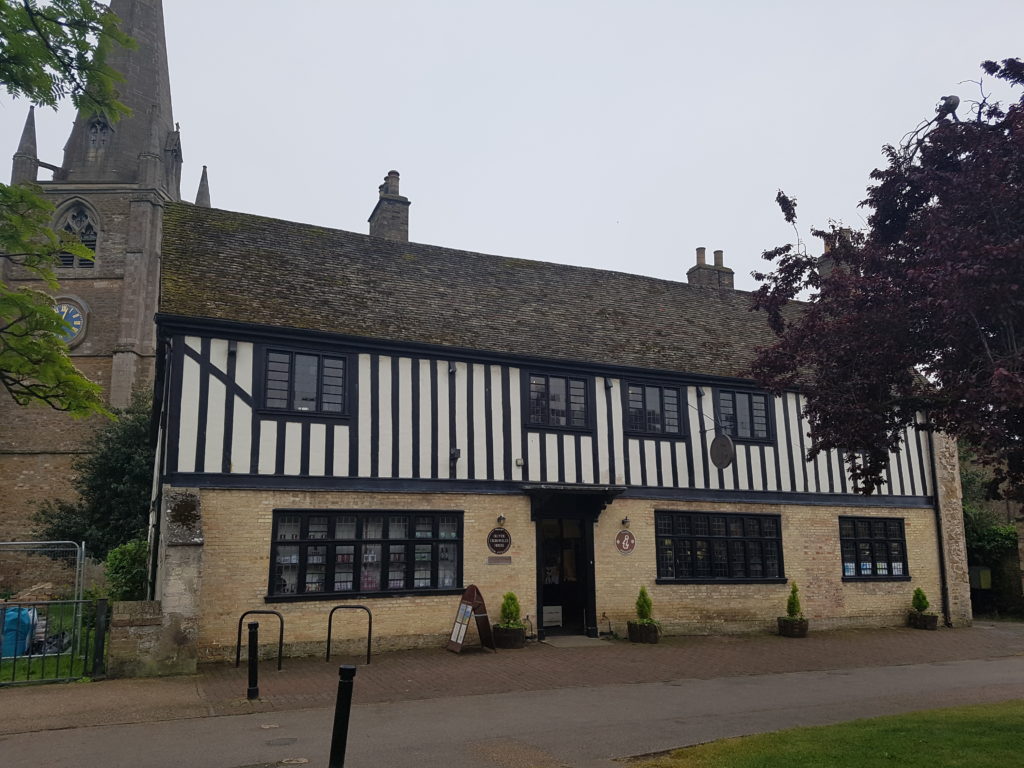
Just around the corner was Ely Cathedral, which was much bigger than we thought it would be, it utterly dominated the skyline, one of the biggest we’ve visited, and in a city not much bigger than Sandbach in terms of population and spread. The Cathedral was very impressive from the outside and even more-so from the inside.
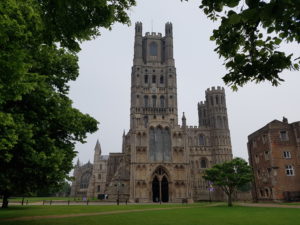
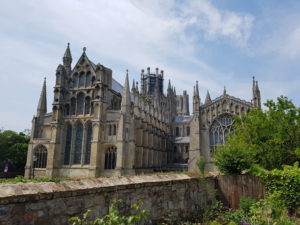
We got inside about 10 minutes before a tour up to the top of the tower started, so I decided to join in. Helen opted to stay downstairs though at the sound of steep thin winding staircases and an 18-inch-wide/4-foot-tall door, a good call since half the group I went up with struggled as well!
First off, some images of the ground-floor, the Cathedral-proper:
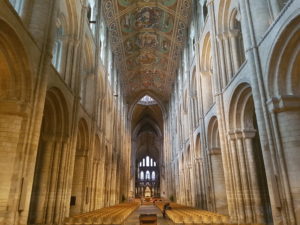
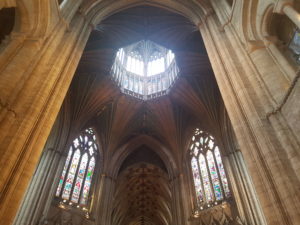
Then from the “first floor” so to speak, a balcony on one of the transepts to the side of the main alter, with Helen down below taking a picture back up at me! There were also some big “spare” organ pipes here which I was expecting to be cylindrical, but apparently are square. These square ones are for the bass to reverberate around better apparently.
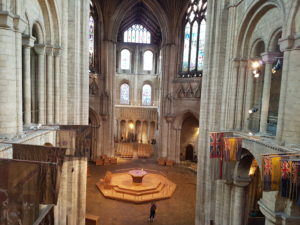
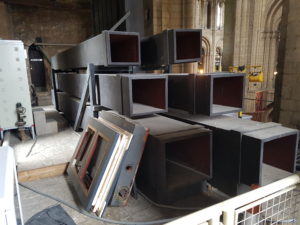
Then out on to the roof of the transept itself, it just stopped raining when we got to this point luckily so we were able to stand outside and admire the views here for a minute.
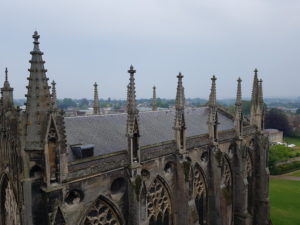
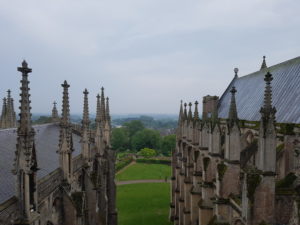
The next part of the climb was through that tiny door and up a very narrow staircase, I couldn’t really take a picture that shows how narrow it is, but my shoulders were touching both sides of the staircase, and you couldn’t put two feet on a single step. Our tour guide said that he sometimes gets people that won’t go further beyond this point, and I can see why! Up these stairs we found ourselves at the top of “the octagon”, just below “the lantern”. The octagon being the octagonal tower where the main alter sat, and the lantern being the set of windows to the outside that created a glow inside the Cathedral, looking like a lantern from below.
This room was full of wooden beams and buttresses, the main structure of which is built from entire oak trees, of which the originals are still there to see and touch. This type of construction isn’t possible in modern times, simply because there are not enough oak trees big enough in the country to hold the weight of such a tower. In the picture, the more rounded beams are the full original trees, simply with their bark shaved off. The more square beams are more modern pieces added to improve the structural integrity of the tower in the last couple of hundred years.
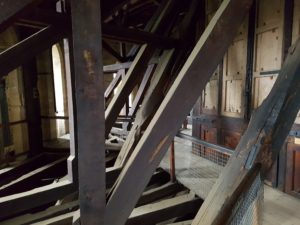
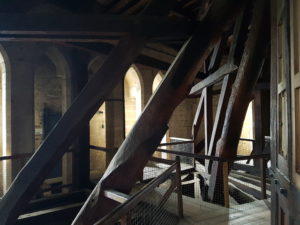
The tour guide then opened up some of the wooden panels, which had angels painted on the other side, you could see these from the ground floor of the Cathedral, but they were much more impressive up close. All the angels were painted in the 19th century, so a lot of the work that can be seen around is very modern.
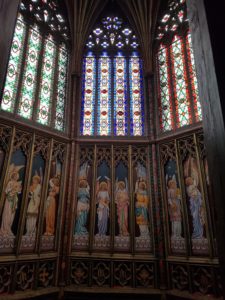
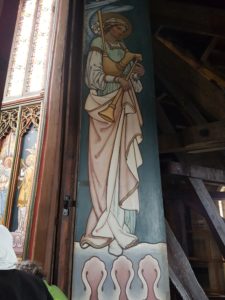
At this point the Cathedral floor was a long way down, and above right in the centre of the lantern at the very top was an oak carving of Jesus, which you can barely make out from the ground, but it looked lovely up-close.
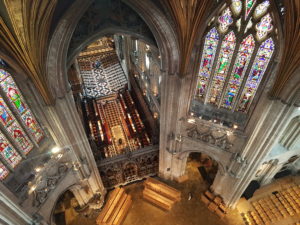
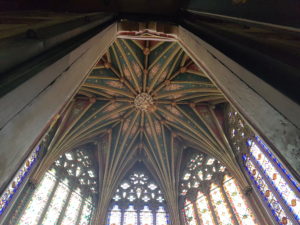
Here we learnt that the original tower collapsed back in the 14th century a few hundred years after it was built, possibly due to foundation works for the neighbouring Lady Chapel. The new unique octagon and lantern replaced the original square tower at this point, taking some of the largest oak trees across the country to build. One last thin staircase, and we finally arrived at the top of the octagon, looking at the windows to the lantern, and out across East Anglia, the views from up this high were incredible, as was the view of just the rest of the Cathedral.
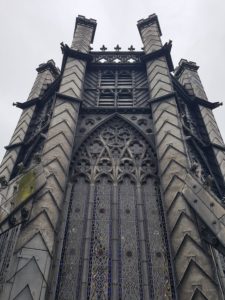
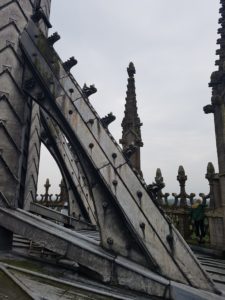
Interestingly, a lot of the more decorative work at the very top of the Cathedral was only added in the 19th century, such as the mini turret “toppers” and the upper part of the stone wall. Up until the Victorian era, these walls and mini turrets were simply flat on the top.
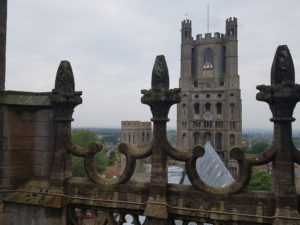
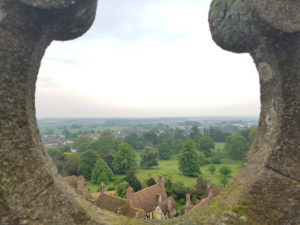
After taking in the scenery for a short while, we made our way back down to the ground floor, and I met up with Helen after thanking the tour guide. She’d been keeping herself occupied with the interior of the Cathedral while I’d been climbing up and down those tiny spiral staircases. There was a lot to see though, with some stunning pieces of artwork, architecture, and stained glass.
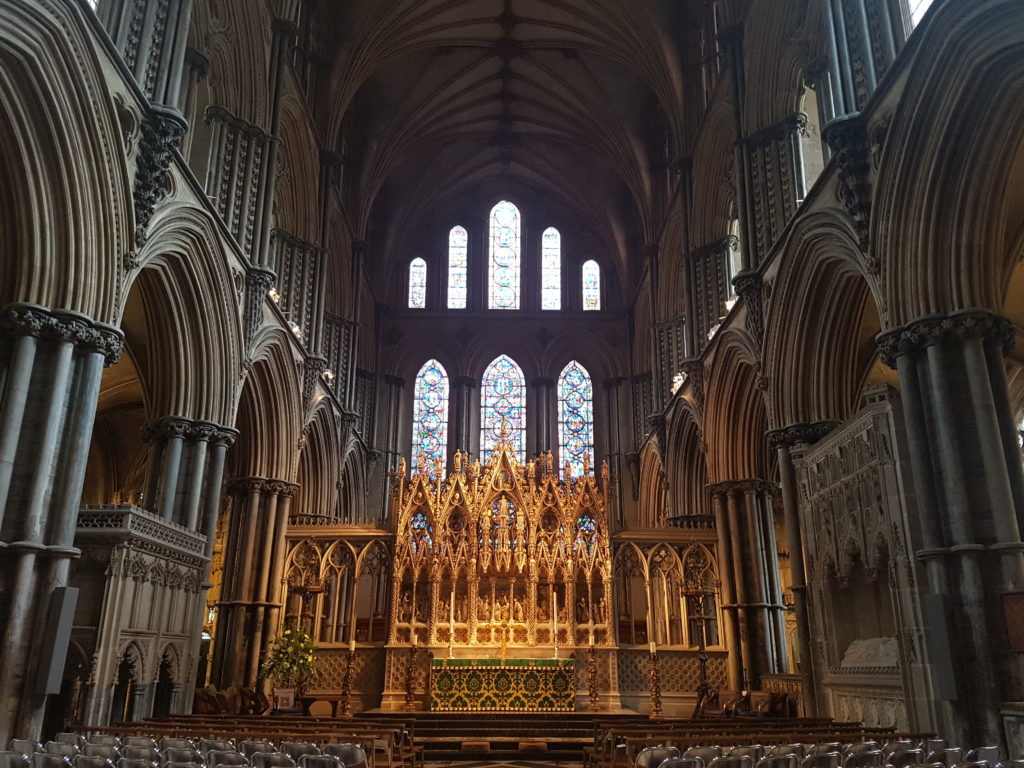
Once we’d had another brief walk around the Cathedral, we visited the stained glass museum, which was in the South side of the Cathedral. The museum itself was arranged as a timeline, starting with the oldest pieces and ending with the newest pieces. I felt the older pieces had much more “soul” than the newer pieces, a lot of them either telling a story or being based on an old legend, whereas the newer pieces seemed to lack any story-telling element and were more abstract. My two favourites were one from 16th century France that was made to show off the “technical virtuosity” at the time, “A Scene from the Legend of St James”, and “Tristan and Isolde” from the late 19th century by James Silvester Sparrow, a scene depicting the tragic love story of Tristan and Isolde, a love story that some believe the story of Sir Lancelot, Queen Guinevere, and King Arthur is based upon.
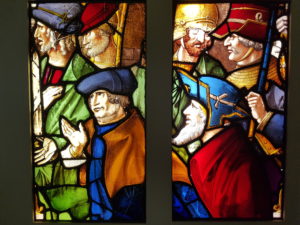
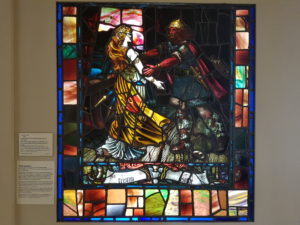
Finally finished at the Cathedral, we suddenly realised we’d been in there for nearly 2 hours, so I sent Helen off to find somewhere for us to have a spot of lunch, while I went and moved the car to a different car park (we didn’t think we’d be in Ely for this long! We found a little local restaurant and sat down for a quick sandwich and a slice of cake before taking a walk around the local market. The city was very busy, there were about three-dozen open-air market stalls out that we had a good time browsing around. We picked up a little statuette of a cat, walked around a little more, then went back to the car to continue our adventure on towards King’s Lynn.























It’s a beautiful cathedral. I’m glad you made it up to the top you slim thing! It sounds like you’ve rediscovered religion.
It’s a funny little town isn’t it.
What a fantastic tour, I’m not sure I would have been brave enough to climb up such a narrow staircase. Ely is a beautiful cathedral and it’s interesting to read more about how the tower was constructed and the bit about the organ pipes so I think you should go on more tours on your travels to keep your public informed.